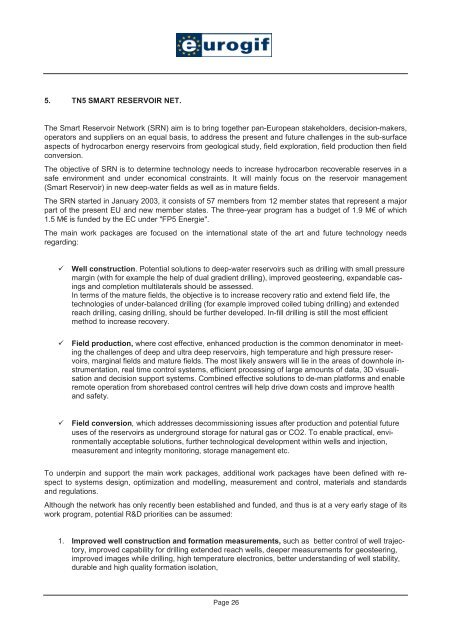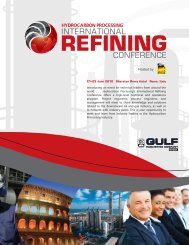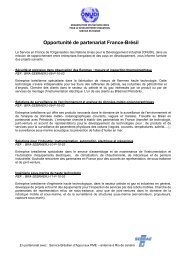Oil & Gas Industries Technology Master Plan - GEP
Oil & Gas Industries Technology Master Plan - GEP
Oil & Gas Industries Technology Master Plan - GEP
You also want an ePaper? Increase the reach of your titles
YUMPU automatically turns print PDFs into web optimized ePapers that Google loves.
5. TN5 SMART RESERVOIR NET.<br />
The Smart Reservoir Network (SRN) aim is to bring together pan-European stakeholders, decision-makers,<br />
operators and suppliers on an equal basis, to address the present and future challenges in the sub-surface<br />
aspects of hydrocarbon energy reservoirs from geological study, field exploration, field production then field<br />
conversion.<br />
The objective of SRN is to determine technology needs to increase hydrocarbon recoverable reserves in a<br />
safe environment and under economical constraints. It will mainly focus on the reservoir management<br />
(Smart Reservoir) in new deep-water fields as well as in mature fields.<br />
The SRN started in January 2003, it consists of 57 members from 12 member states that represent a major<br />
part of the present EU and new member states. The three-year program has a budget of 1.9 M€ of which<br />
1.5 M€ is funded by the EC under "FP5 Energie".<br />
The main work packages are focused on the international state of the art and future technology needs<br />
regarding:<br />
<br />
<br />
Well construction. Potential solutions to deep-water reservoirs such as drilling with small pressure<br />
margin (with for example the help of dual gradient drilling), improved geosteering, expandable casings<br />
and completion multilaterals should be assessed.<br />
In terms of the mature fields, the objective is to increase recovery ratio and extend field life, the<br />
technologies of under-balanced drilling (for example improved coiled tubing drilling) and extended<br />
reach drilling, casing drilling, should be further developed. In-fill drilling is still the most efficient<br />
method to increase recovery.<br />
Field production, where cost effective, enhanced production is the common denominator in meeting<br />
the challenges of deep and ultra deep reservoirs, high temperature and high pressure reservoirs,<br />
marginal fields and mature fields. The most likely answers will lie in the areas of downhole instrumentation,<br />
real time control systems, efficient processing of large amounts of data, 3D visualisation<br />
and decision support systems. Combined effective solutions to de-man platforms and enable<br />
remote operation from shorebased control centres will help drive down costs and improve health<br />
and safety.<br />
<br />
Field conversion, which addresses decommissioning issues after production and potential future<br />
uses of the reservoirs as underground storage for natural gas or CO2. To enable practical, environmentally<br />
acceptable solutions, further technological development within wells and injection,<br />
measurement and integrity monitoring, storage management etc.<br />
To underpin and support the main work packages, additional work packages have been defined with respect<br />
to systems design, optimization and modelling, measurement and control, materials and standards<br />
and regulations.<br />
Although the network has only recently been established and funded, and thus is at a very early stage of its<br />
work program, potential R&D priorities can be assumed:<br />
1. Improved well construction and formation measurements, such as better control of well trajectory,<br />
improved capability for drilling extended reach wells, deeper measurements for geosteering,<br />
improved images while drilling, high temperature electronics, better understanding of well stability,<br />
durable and high quality formation isolation,<br />
Page 26








![%LODQV pQHUJpWLTXHV HW JD] j HIIHW GH VHUUH ... - GEP](https://img.yumpu.com/29947973/1/184x260/lodqv-pqhujpwltxhv-hw-jd-j-hiihw-gh-vhuuh-gep.jpg?quality=85)
